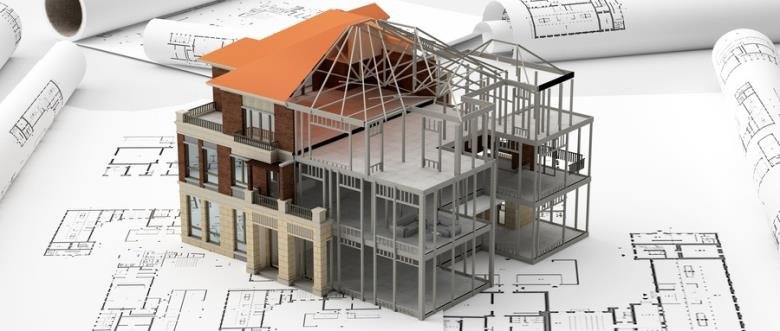CAD to BIM Services: Empowering the AEC Industry

The construction ecosystem has long been a driving force for urban development but has historically been held back by outdated processes. In a landscape dominated by technological innovation, Architectural, Engineering, and Construction (AEC) professionals face the arduous task of keeping up with the industry’s digital transformation and being at the forefront. Central to this transformation is the shift from Computer-Aided Design (CAD) to the Building Information Modeling (BIM) framework—a metamorphosis that’s more than mere nomenclature change; it’s a fundamental upgrade in the way AEC projects are planned, designed, constructed, and managed.
Understanding the Shift: CAD vs. BIM
Is it just another buzzword, “BIM,” or is it as monumental in its consequences as some pundits suggest? Where does CAD stop and BIM begin on this technological continuum, and why is the transition so crucial for the AEC industry?
The CAD era revolutionized design but presented an inherent limitation—it treated every element as an independent entity within the system. In contrast, BIM is interconnectivity personified; it mandates that any change to a building’s digital representation triggers a cascade of updates across the model. It’s a shift from mere drafting to digital building.
There’s an elemental difference in how CAD and BIM software handle data. CAD focuses on the graphical representation—a 2-dimensional or 3-dimensional drawing—while BIM is all about “information,” carrying detailed specifications of each building component in a virtual model that mirrors a building’s actual physical construction. This change in perspective lays the perfect foundation for discussing the pivotal role of BIM services in the AEC industry.
The AEC Industry: The Why and How of BIM Implementation
BIM’s value proposition is multifold and far-reaching, but its pivot point is integrating disparate parts of the construction process into a unified whole. With BIM, design companies and contractors work from a synchronized model, eliminating the miscommunication that has traditionally plagued the industry.
The “federated model” approach—where multiple models coexist and interact—ensures that any change or update in one model flows seamlessly into another. The result? More innovative collaboration, enhanced visualization, better-informed decision-making, and significantly reduced costly errors.
To implement BIM effectively, AEC professionals must appreciate that BIM isn’t just another software—it’s about implementing new workflows and methodologies that harness BIM’s true potential. This requires a holistic approach, from software-training to cultural change, but the benefits are clear:
- Improved project planning and management
- Enhanced design quality and decision-making
- Greater sustainability with the ability to simulate building performance
- Increased collaboration across all project stakeholders
It’s a steep learning curve, but BIM services are here to facilitate the industry through this transition, offering the expertise necessary to ensure a smooth and value-laden transformation.
BIM Services: Enabling the AEC Workforce
The question is no longer “when” but “how” BIM will become an inherent part of the AEC industry. BIM services are the linchpin for transitioning AEC professionals—from architects to civil engineers—to the new paradigm. These services offer a spectrum of support, from BIM consultancy to BIM modeling, and extend to training and support for the BIM methodology.
Engaging a BIM service provider can be likened to having a knowledgeable guide on a complex terrain. They offer practitioners direction, training, and the tools to efficiently traverse the new digital landscape. In this new digital territory, the importance of skilled guidance cannot be overstated. The world of BIM is as vast as it is intricate, and only by utilizing it to its fullest can AEC professionals realize its potential to transform efficiency and precision in their work.
The Future of BIM in the AEC Industry
The trajectory for BIM within the AEC industry is one of growth and deepening integration. Techniques such as 4D and 5D BIM will become industry standards and indispensable tools for professionals in the field. 4D BIM incorporates the dimension of time into the design, enabling visualizations of the project’s construction sequence. Meanwhile, 5D BIM adds the element of cost, providing insights into a project’s finances throughout its lifecycle.
The prospects for BIM’s future are equally as exciting. With concepts like “BIM to Field” taking shape, BIM data will directly apply on construction sites, informing and assisting in actual building processes. This transition from the digital realm to the field not only improves the construction workflow but represents a complete change in the rhythm of how AEC projects are managed.
Navigating the Path to BIM Integration
For those in the AEC industry, the path to BIM integration is not an isolated one but a collective effort. BIM services, AEC practitioners, and project stakeholders are on the same voyage to a more connected, informed, and efficient construction industry. Industry associations, training institutions, and leading firms are pivotal players, fostering a community approach to learning and implementing BIM.
Each step toward BIM integration is an investment in the industry’s future. It’s a commitment to elevating the standard of construction practices and the quality of urban environments. The time is ripe for AEC professionals to leverage the services and expertise available to them as they prepare to redefine the very lexicon of urban development through BIM’s lens.
Final Thoughts
Empowering the AEC industry through BIM is not just a technological upgrade; it’s a cultural shift that celebrates collaboration, precision, and efficiency. This marriage of technology and tradition paves the way for a new breed of professionals who don’t just build structures but orchestrate sustainable, intelligent spaces that resonate with the pulse of the people.
Suppose you’re an AEC professional looking to enter BIM or a service provider aiming to support this meaningful transition. In that case, the message is clear—now is the time, and with concerted effort, the possibilities are infinite. BIM services are not just about software and models; they’re about the people, the projects, and the future of our cities.
